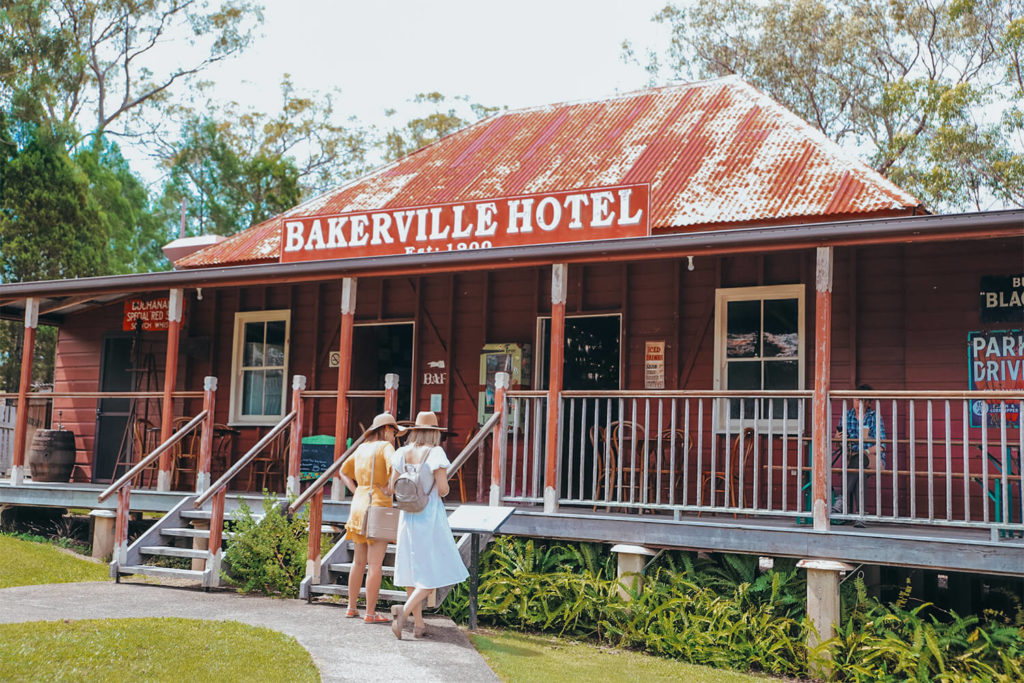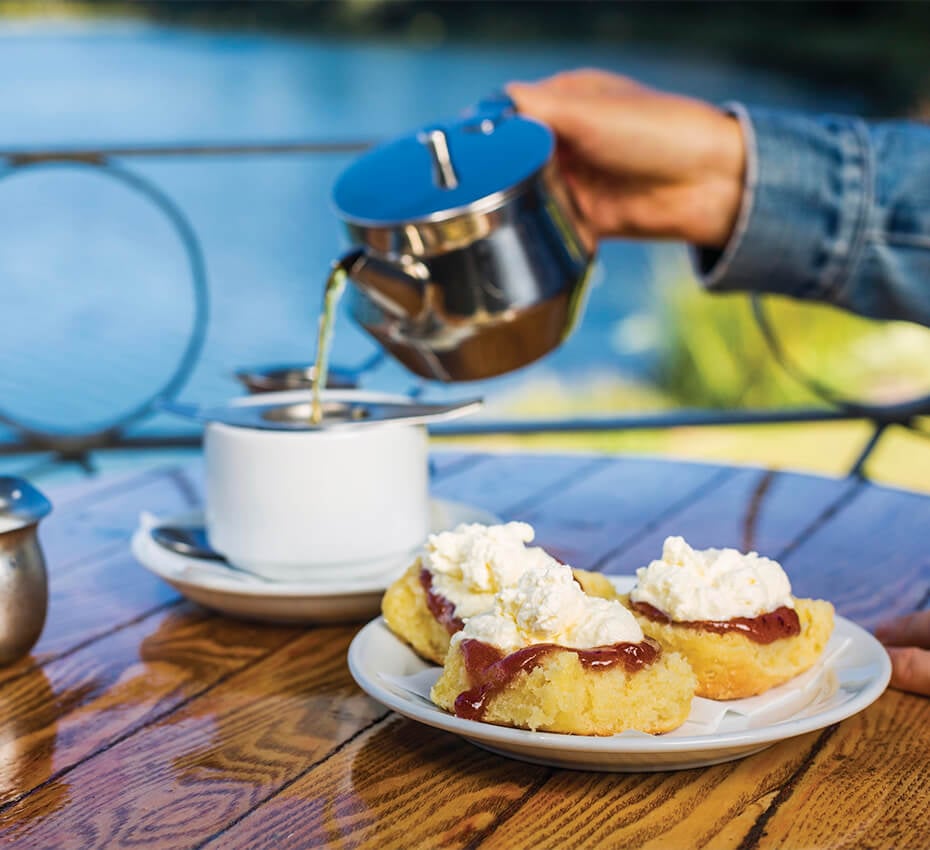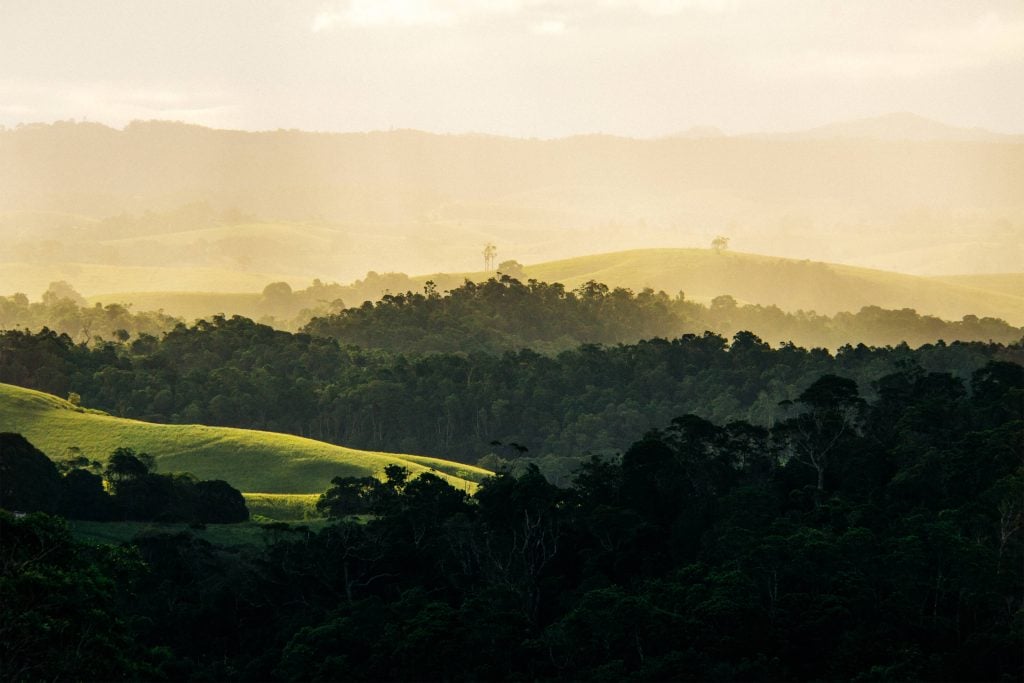TNQ Writer
Cruise up the range behind Cairns and the first thing you’ll notice is the ever-changing scenery and a welcome drop in temperature. Welcome to the Atherton Tablelands, a place where most travellers choose to follow the waterfall circuit, but if you’re exploring with kids, you’ll want to veer off this well-worn path.
First stop should be the Mareeba Information Centre where kids (and adults) will love the interactive display of the history of the Tablelands – stretching back to its Indigenous past and into its European pioneering days. Highlighted are the heady days of tobacco farming along with the Tableland’s role during World War II – all for the cost of a gold coin.
A short 15km drive out west of Mareeba through savannah country is Granite Gorge Nature Park. First on your list will be to hand feed the Mareeba rock-wallabies unique to this area. Next is to follow the nearby trail, a natural adventure playground with its gigantic boulders, caves, swim holes, creeks, bridges and waterfalls. See if you can spot ‘Turks Head’ and ‘Whale Rock’ whilst on your journey.

Mareeba Heritage Museum and Visitor Centre
Mareeba Heritage Museum and Visitor Centre

Granite Gorge
Granite Gorge

Mareeba Drive-In
Mareeba Drive-In
Down at the weir you can feed turtles and eels and take a dip yourself. Camping is an option here, and there’s cabins and safari tents also on offer. You’ll find a menagerie of domesticated and native animals scattered throughout the campground that will keep the kids fully entertained. And the best thing about an overnight stay? You’ll be able to kick back and enjoy one of their spectacular sunsets renowned for this area.
Another unique camping option is the Mareeba Drive-In. A nostalgic flashback to the 70s and 80s, before VHS, DVD’s and Netflix became a thing. Double features run on the weekends so take a camp chair, get cosy under a blanket and enjoy a movie under the stars. Camping overnight is included in the ticket price and with Mareeba boasting 300 days of sunshine a year, you’ll find rain will be the last thing on your mind.

Cows on the Atherton Tablelands
Cows on the Atherton Tablelands

Atherton Tablelands fields
Atherton Tablelands fields

Lake Tinaroo
Lake Tinaroo
Head south towards Atherton and you’ll be driving into Australia’s Golden Triangle, where rich red volcanic soil supports agricultural land nicknamed the food bowl of the northern tropics. Here you’ll find rolling hills, dairy cows and a patchwork of crops irrigated from nearby Lake Tinaroo, created by damming the Barron River in the fifties.
The lake is now a popular spot for swimmers, skiers, walkers, fishing, red clawing, picnics (thanks to all the barbecues) and camping, with campgrounds scattered throughout the Lake’s bays and promontories.
Lake Tinaroo is also well-known for its monster barramundi thanks to a fish stocking program that was implemented in the mid 80’s. The lake now hosts the annual ‘Biggest Barra Bash’ which consistently smashes records, and some may argue that it should be referred to as the ‘Barramundi World Record Capital of Australia’.

Picnic table at Tinaroo
Picnic table at Tinaroo

Crystal Caves in Atherton
Crystal Caves in Atherton

Wakeboarding at Lake Tinaroo
Wakeboarding at Lake Tinaroo
In Atherton there’s the quirky Crystal Caves, where kids can don a miner’s cap, explore a grotto full of sparkling crystals and crack a geode. Nearby is the Tolga Bat Hospital where you and the kids can come eye-to-eye with their fruit and micro bats under care and learn how integral they are to the rainforests of the Wet Tropics.
And what kid doesn’t love a good volcano story. Good news, because the surrounding area was carved from volcanic activity that dates back only 8,000 years ago. Young enough to be woven into the stories of the local Aboriginal people of this area.
Drive to the top of Atherton’s Hallorans Hill Conservation Park and the dome-shaped hill will give you a hint at what it once was. From here see if you can count the Seven Sisters, conical hills formed by splatters of lava that once rained from volcanic vents.
One such example of this is 20 minutes south, at Mt Hypipamee. Here you can view a volcanic pipe created by an explosion of steam that blasted through solid granite. A short walk-through Wet Tropic rainforest will take you to a lookout where you can peer down to the algal-green water that lays 60m below – 73m below that you’ll hit rock-bottom.

Mt Hypipamee
Drive up the range to Herberton and you’ll find a picturesque town with architecture dating back to its mining days. Enjoy panning for tin at the Herberton Mining Museum and follow the nearby trails past abandoned mineshafts and old mining machinery. Historic Village Herberton is popular for its collection of original buildings and traditional Queenslanders, plus displays that realistically capture the pioneering history of the region.

Historic Village Herberton cafe
Historic Village Herberton cafe

Historic Village Herberton demonstration
Historic Village Herberton demonstration

Cheese platter at Gallo Dairyland
Cheese platter at Gallo Dairyland
Head east towards Yungaburra and on the way you’ll find Gallo Dairyland. Here the kids can enjoy exploring a working dairy farm and get up close and personal with the farm animals. And let’s not forget their handcrafted chocolates and finest Dairyland cheese also on offer.
Just before Yungaburra is the Curtain Fig Tree. It’s a short 10 minute walk that’s worth it just to see your kid’s eyes pop when they spot this fairy-tale like tree.
At Yungaburra, another quaint Tableland village, you and the kids will want to check out the Platypus viewing platform, the most likely place to see a platypus in Atherton Tablelands. Be aware though, silence is essential for spotting these shy critters.
Eight minutes east of Yungaburra is another example of Lake Atherton’s volcanic past. Here lies Lake Eacham, where a massive steam explosion formed a crater lake that now boasts crystal-clear water.
It’s a popular swimming destination for locals that want to escape the coastal heat. You’ll find a swimming pontoon and free BBQs so don’t forget to pack a picnic and take your togs. If you chose to do the 5km walk around the lake, you can explore the rich pocket of rainforest that features rare critters such as the Cassowary and the Lumholtz tree-kangaroo.

Yungaburra
Yungaburra

Cheese platter at Gallo Dairyland
Cheese platter at Gallo Dairyland

Curtain Fig Tree
Curtain Fig Tree

Lake Eacham
Lake Eacham
Another crater lake is just around the corner. Lake Barrine is popular for its award-winning Devonshire tea and home-made scones on offer at the historic timber teahouse, built in the 1930’s. Check out the black and white photos that adorn the walls as it once was a dance hall, an aquatic centre, a guest house, a school and during World War II, a convalescent home. And don’t miss their rainforest and wildlife cruise where the stories and sight of the lake’s unique wildlife and rainforest plants will easily entertain the children.
If you haven’t exhausted the kids by now, remember, there’s always a waterfall or two to visit!









